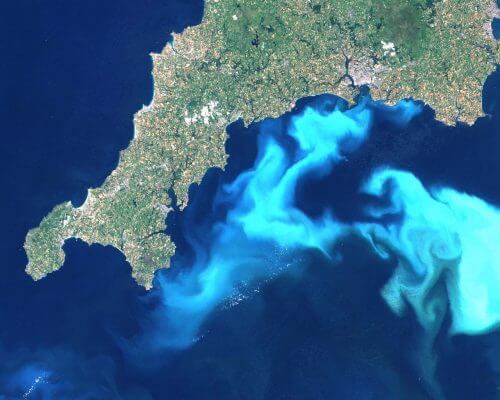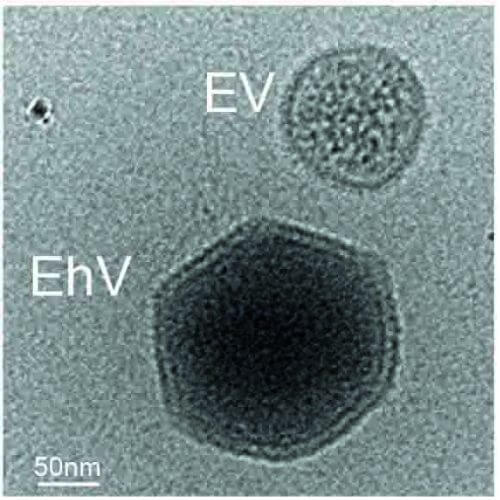An unknown mode of action of viruses helps in the large-scale infection of algae and the collapse of their giant blooms

The giant blooms of unicellular algae (phytoplankton) are undoubtedly among the most spectacular and dramatic events on Earth. In a short time they spread over thousands of kilometers in the ocean - then collapse and disappear as quickly as they came. Thanks to the research of Prof. Assaf Verdi From the Department of Plant and Environmental Sciences at the Weizmann Institute and others, we now know that the rapid disappearance is largely due to widespread viral infection. New research in the laboratory of Prof. Verdi, SRecently reported in the scientific journal Nature Microbiology, reveals an unknown mode of action of these viruses designed to increase the infectivity of new cells.
The research focused on a form of communication that can be called a "message in a bottle" - well-packaged messages that are sent from infected cells using "extracellular vesicles" (EV: extracellular vesicles). According to popular belief, these vesicles help cells evade viral invasion, but could they serve an entirely different purpose? The research team, which was led by Dr. Daniela Schatz from Prof. Verdi's group, found that these weekly cells - which mainly contain RNA from the phytoplankton cell itself - actually help the infection process. In a laboratory experiment, the scientists added bubbles to uninfected cells and then exposed them to the virus. The result: the infection process progressed much more efficiently than in cells that were not exposed to the bubbles.

"Not only does the virus take over the replication mechanism of the cells, it also takes over their means of communication," explains Dr. Shatz. "The 'message in a bottle' is sent while wrapped in the cell's own material when it is directed towards other cells of the same species." Although they do not know the exact mechanism that allows for increased infection, the researchers hypothesize that sending the bubbles may, among other things, help a virus that attacks a certain species of phytoplankton to locate the next host. Moreover, the experiments they conducted showed that a cell does not have to be infected at all to mobilize for the virus: virus-infected cells release a communication signal that causes neighboring cells to produce these bubbles.
The researchers believe that the production of bubbles on a large scale may change the balance of viral populations during infection - and perhaps even give an advantage to viruses that attack a single species or those that initially spread at a relatively slow rate. In addition, they believe that continued research in the field may answer the question of how the viruses survive in the periods between blooms and do not lose their ability to infect when exposed to strong ultraviolet radiation.

Dr. Schatz and Prof. Verdi point out that the study of extracellular bubbles has received increased exposure in recent years, after it was discovered that cancer cells release similar bubbles called exosomes, among other things, when they seek to send metastases to new organs. A study by another laboratory at the institute showed that a process of multiple blebs also occurs in malaria. However, the present study is the first to report virus-induced bubble production in an aquatic environment. "Phytoplankton is essential for life on Earth due to the large-scale photosynthesis processes that fix carbon dioxide and release oxygen into the atmosphere," says Prof. Verdi. "In order to understand the important ecological phenomenon of giant blooms, we still have a lot to learn about the interactions and ways of communication of these single-celled creatures."
